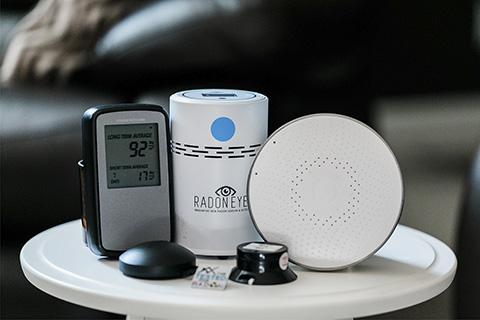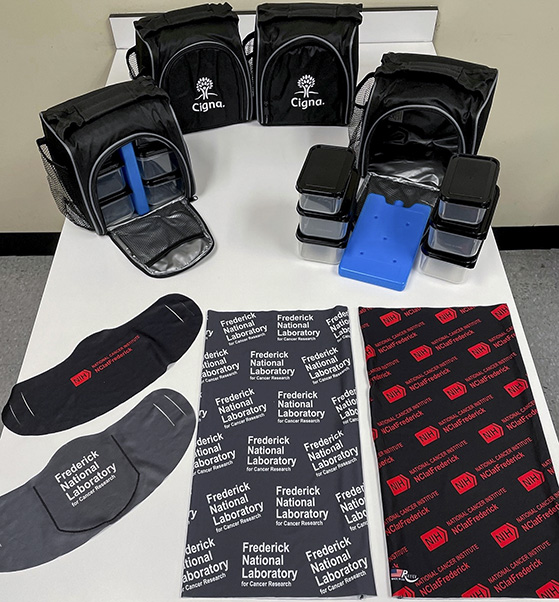Sleep more, lose weight, eat balanced meals. This week these words are as familiar as an overplayed holiday carol as many of us once again make (and, all too easily, break) health-conscious New Year’s resolutions. But the staff in Environment, Health, and Safety and Occupational Health Services want us to add one more resolution to our lists for 2022.
Thankfully, it’s easier: check the radon levels in our homes.
Radon is a colorless and odorless radioactive gas present in tiny quantities throughout the environment. It’s largely harmless at such a small scale, and some studies suggest that low doses may be somewhat beneficial. But Paul Marshall, a senior environment, health, and safety manager in EHS, points out much more research is needed there.
That’s why EHS and OHS are observing Radon Action Month in January. This is a federal initiative to raise awareness and testing for radon and promote efforts to mitigate it. The goal is to equip Americans with the information and resources necessary to determine the level of radon in their homes and learn about ways to address high levels.
In poorly ventilated areas like houses, the gas can accumulate to unsafe levels. Radon is the leading cause of lung cancer death among nonsmokers in the U.S. Smoking further increases the risk of developing cancer after radon exposure.
It’s an easily overlooked health hazard that has become even more relevant during the pandemic, since many homes continue to serve as workplaces. The most recent American Time Use Survey from the Bureau of Labor Statistics reported that the number of Americans working from home nearly doubled in 2020 over 2019. A separate analysis of the same survey noted that Americans spent more time at home overall.
EHS and OHS plan to roll out Radon Action Month over four weeks at NCI at Frederick and Frederick National Laboratory. Each week will include an activity focused on an aspect of radon and how to safely address it, Marshall said.
Prizes will be awarded to select participants. Some winners will receive an all-inclusive radon test kit with postage and laboratory fees already paid.
Weeks one and two will cover awareness, tracking, and health effects, especially the increased risk for cancer. Testing—the only way to know the radon level in a home—is week three’s theme. More information about affordable and accessible test kits will be provided with the activity. Week four will focus on ways to fix high radon levels and will include information from federal, state, and local authorities.
Those with regular email access will find a weekly invitation to each activity in their inboxes. Those without access can still participate via hard copy and submit their completed activities to EHS through a supervisor.
“Please participate in this fun and informative series of activities meant to promote health and well-being,” Marshall said.
Questions about Radon Action Month and the planned activities can be directed to Paul Marshall at paul.marshall@nih.gov.
Samuel Lopez is a technical editor in Scientific Publications, Graphics & Media (SPGM), where he writes for NCI at Frederick and Frederick National Laboratory’s news outlets; manages the day-to-day operations of the Poster newsletter; informally serves as an institutional historian; and edits scientific manuscripts, corporate documentation, and a slew of other written media. SPGM is the facilities’ creative services department and hub for editing, illustration, graphic design, formatting, and multimedia training and support.



